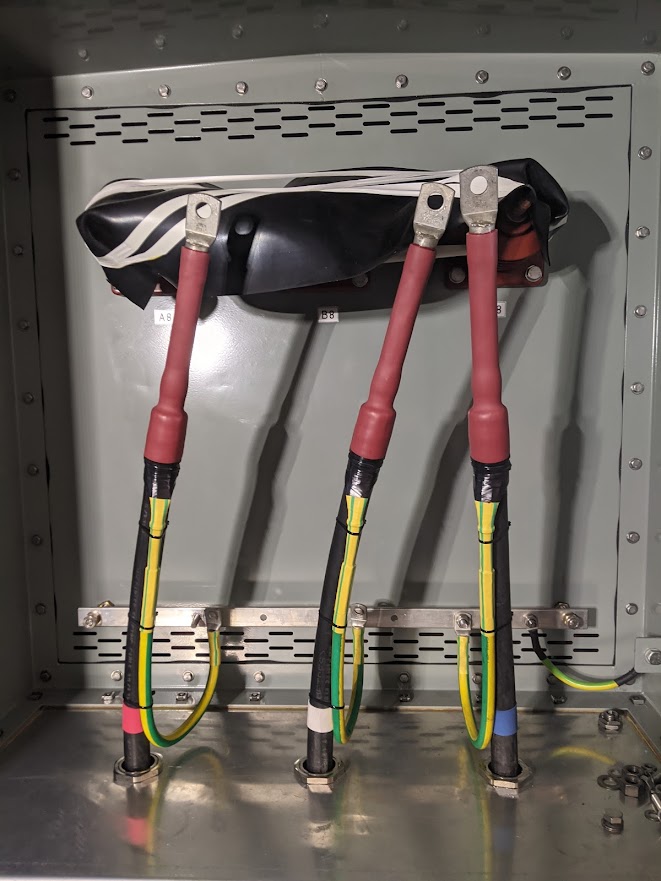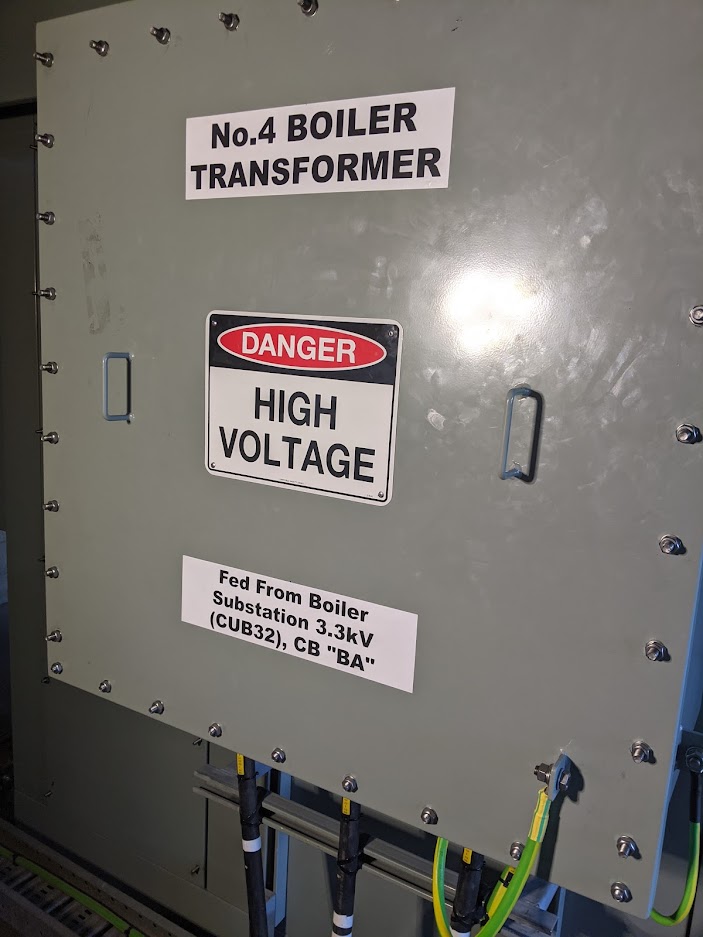AS2067 Section 1 – Where a HV Audit is Required
1.1 SCOPE
This Standard provides minimum requirements for the design and erection of high voltage
installations in systems with nominal voltages above 1 kV a.c. and nominal frequency up to
and including 60 Hz, so as to provide safety and proper functioning for the use intended.
For the purposes of this Standard, a high voltage installation is considered to be:
(a) An electricity network substation, under the control of an electricity network operator
or entity authorized by a licence or other legal instrument to convey electricity.
(b) The high voltage parts of an electrical installation of a power station including all auxiliary systems and interconnecting lines and cables between power stations if on the same site.
(c) Electrical installations built at offshore platforms, e.g. offshore wind power farms.
(d) The high voltage parts of an electrical installation that are not covered in (a) or (b) above. This may include but not be limited to consumer and customer electrical installations serving premises such as factories, commercial facilities, industrial plants, institutional facilities and mine sites.
A high voltage installation includes, but is not limited to, the following equipment:
(i) High voltage electrical installations on masts, poles and towers.
(ii) Switchgear and/or transformers and/or electrical equipment located outside a closed
electrical operating area.
(iii) Rotating electrical machines.
(iv) Switchgear, controlgear and assemblies.
(v) Transformers and reactors.
(vi) Converters.
(vii) Cables.
(viii) Lines.
(ix) Wiring systems.
(x) Batteries, battery chargers and associated d.c. supply systems.
(xi) Capacitors.
(xii) Earthing systems.
(xiii) Buildings and fences that are part of a closed electrical operating area.
(xiv) Associated protection, control, auxiliary and ancillary systems.
(xv) Structures, foundations, earthworks and drainage.
NOTE: In general, a product Standard for an item of equipment takes precedence over this Standard.
This Standard does not apply to the design and erection of any of the following:
(A) Overhead lines and underground cables between separate installations.
(B) Installations on ships and off-shore installations in accordance with IEC 61892 series.
(C) Underground parts of mine site electrical installations, or parts of such installations,
for which mining industry specific legislation sets other requirements.
(D) Switchgear and/or transformers and/or electrical equipment located within a closed
electrical operating area supplied at low voltage and where contact cannot be made
with high voltage conductors.
(E) Test sites.
When do I need a High Voltage Audit?
All new or modified installations must have a high voltage audit completed to comply withe the Qld electrical safety act, however in the real world this only partially covers the requirements as things get changed added and repaired and often leaves the once complaint installation very much lacking and unsafe – Protection and safety clearances are normally the worst offending problems. Periodic Audits is the best way to ensure the installation meets safety requirements and ensures both plant and workers remain as safe as possible. We do Draglines shovels Transmission Lines, Substations and High Voltage Motors as well as switchboards RMU’s and ancillary equipment.
Connection and Reconnection of High Voltage Installations
This information gives advice that is practical information about legislative requirements for owners of high voltage installations. To look for the actual conditions that are legislative please refer to the Electrical protection Act 2002 plus the electric Safety Regulation 2002. What exactly is a voltage installation that is high? A voltage that is high is a small grouping of components of electrical equipment permanently connected together and supplied with electricity at voltages greater than 1000VAC RMS or 1500V ripple-free DC.
Examples of high voltage systems
Organizations that take electricity supply greater than 1000VAC RMS or 1500 ripple free DC direct from the electricity distributor, or have portions of their electrical installation operating at such voltages, have actually high voltage installations – for example shopping centers or big manufacturing sites that have a high voltage transformer and switchgear onsite powering there installation.
Penalties for offences (Not getting a High Voltage Audit )
Failure to adhere to the obligations under part 27 regarding the Electrical Safety Act 2002 may end in legal proceedings that may include charges up to $1,000,000 ($200,000 for an individual) or three years imprisonment. Under area 153 of the Electrical protection Regulation 2002, a person must not connect or reconnect a to any high voltage electrical installation after electrical work has been performed on the installation, unless the electric work was inspected by a certified auditor and found to be electrically safe and compliant with the Wiring Rules (AS/NZS 3000) and other relevant Australian standards, such as AS 2067 (Substations and high voltage installations surpassing 1 kV a.c.).
Obligations and responsibilities for High Voltage Systems
Owners of high voltage Installations have responsibilities to ensure safe operation of their electrical infrastructure. Periodic inspections can prolong the lifetime of the equipment while correct operating procedures and meeting Australian Standards compliance regulations. BDD’s accedited high voltage compliance audit and installation safety management service provides 3rd party audits of customers high voltage installations, protection and ancillary equipment supported by documentation that outlines customers electrical systems. The report advise customers how to rectify areas of non-compliance, suggested remedial actions and compliance information for Service and Installation Rules and relevant standards.
Our Work
Our Clients are our Greatest Assetts

Key Personal
Completed Electrical apprentice in 1998 and worked extensively in the Electrical distribution industry and mining industry both in Coal and Metalliferous mining. Scott attended university at JCU, studying BA of electrical engineering. Always happy to help where he can and offers many years of experience and know how.
Iuliia completed a BA in civil engineering and worked extensively designing building and houses. Completed a second degree in graduate diploma of building surveying and can sort you out if you need any building certification work done.
Address
140 Patullo Road, Gregory River Proserpine QLD 4800
Phone
0749471558 or 0407647536 No telemarketers pls as you will be wasting both of our time
scott (at@)bdd.com.au replace (at@) with just @ – this is a way to try and prevent email harvesters from collecting my email address








